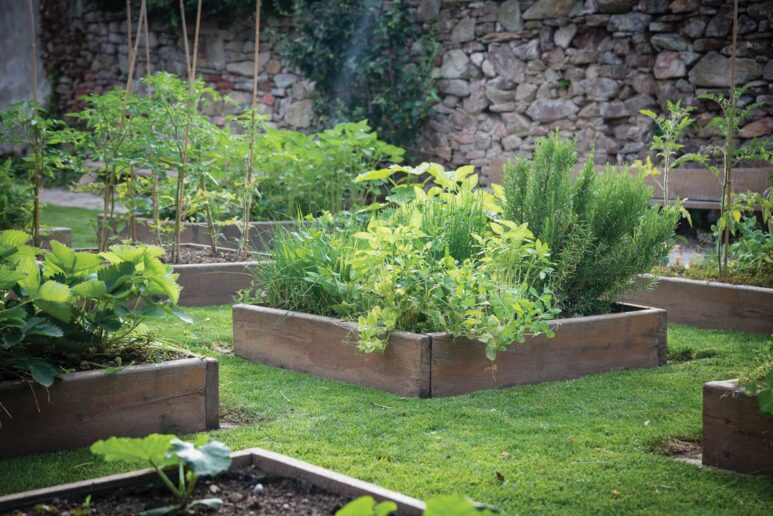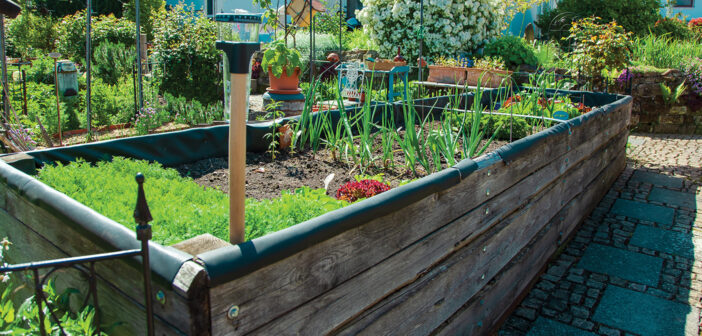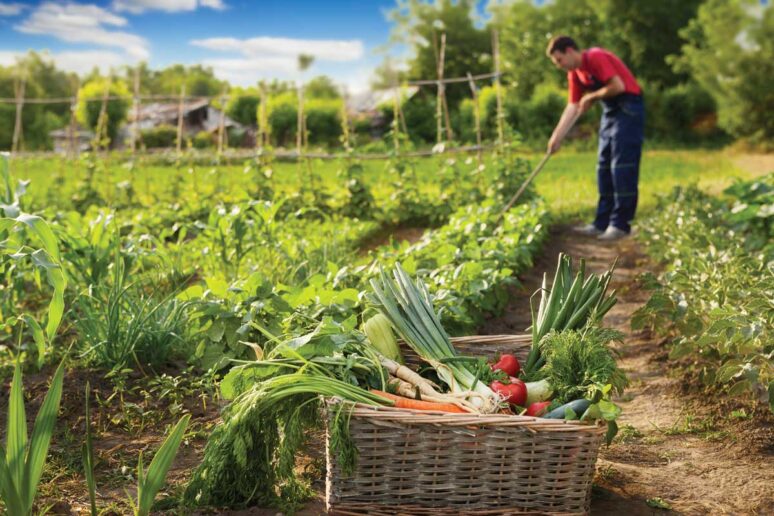Backyard gardening has been a hot topic for a few years now, with many trying their hand at growing veggies and herbs. And, what a delight it is to walk amongst your rows of radishes flourishing, tomatoes ripening, peppers popping and even pumpkins beginning to round into form. Personal gardens can be grown in a variety of styles including hanging, vertical and potted; but the two most common and ultimately successful are raised or traditional in-ground.
So, which type is best for you? Most believe the choice really just comes down to available space – basically, if you have the space, you should put in a traditional garden and that makes sense … to a point. When choosing the optimal garden style however, more factors should be considered. Each option has pros and cons and each potential gardener should consider which one checks all the boxes. Success can be found either above or in-ground – all it takes is a little hard work, time and patience.
Why go traditional?
Traditional gardens are the vision of every farmer. We dream of rows upon rows of lovely plants, each offering a bounty which, come harvest time, can be an enriching family activity. In-ground gardens require less cost and labor; you’re utilizing the earth in all its glory and (hopefully) the earth will provide. An in-ground garden requires less watering and is naturally better insulated against flash temperature changes. Generally, traditional gardens are much bigger than raised, limited only to the size of your property and the space you want to devote to the project. It can be a small patch of ground dedicated to one or two plants or a full-blown acre or more dedicated to a varietal bonanza. It’s entirely up to you!
The downside of a traditional garden is centered around that which we cannot completely control – nature. The true success of a traditional garden depends largely on chance. Soil quality can be nearly random (and can be altered somewhat by soil additions), and the gardener has much less control over weeds and grasses getting in the way. In-ground pests and other animals may also treat your garden as a personal buffet and protection such as fencing is often required. The weather can also affect in-ground gardens more than raised. Severe storms can cause flooding that may “drown” the plants and siphon away nutrients while a prolonged winter season can delay planting by weeks.
A traditional garden can be set up in a matter of days with the right equipment and the cost of a few starter plants or seeds. Choosing the right patch of land and testing the soil can go a long way toward earning your green thumb. If you want to get right down to it without any wait, a traditional garden can be the right route. Just keep an eye out for furry little thieves!

ventura / stock.adobe.com
Why raise it up?
For those with limited space or soil, raised garden beds are the default choice. The container or box of soil in which plants are grown can be made to any size, but are generally made small enough to allow cultivation from all sides. They can be placed anywhere but once complete and full of soil, become semi-permanent structures.
The biggest advantage of a raised garden bed is more control over the spontaneity of nature. Gardeners can control soil quality by using just the type they want and plants can root more deeply into it. (Generally, a well-constructed garden bed is no less than two feet deep.) Pests are more controlled depending on the construction of the box; screens can keep out underground pests and high sides deter small, above-ground animals. For bigger critters such as deer, fencing may still be needed. Weeds can be stopped or mitigated with weed fabric and filters under the soil, and weeding this type of garden is easier and more ergonomic for people with back and leg issues. Garden beds come in all sizes and can be built to your own specifications to create a more pleasing outdoor aesthetic.
Raised beds, however, can be very expensive at the outset. The cost of building materials or to purchase the beds is high and the project can be labor intensive. Most beds are made of wood that will deteriorate over time, eventually having to be dismantled. (Their life can be prolonged with non-toxic wood sealer.) Due to better drainage, the beds will have to be watered much more than a traditional garden and harvested earlier in the season – they are susceptible to early freezing as they are less insulated.
Again, success can be found with either style, with each offering its own advantages and disadvantages. Make your choice (or do both) and get growing! That salsa isn’t going to make itself!















